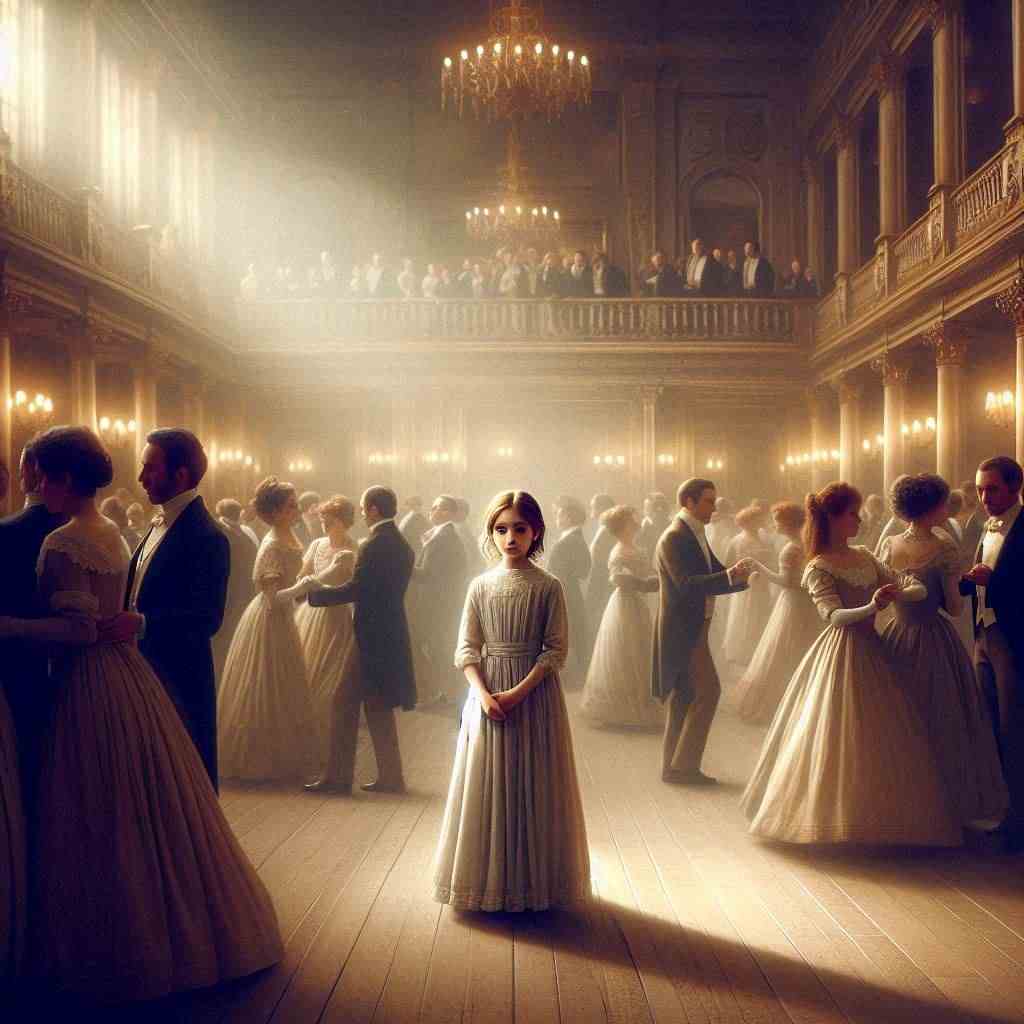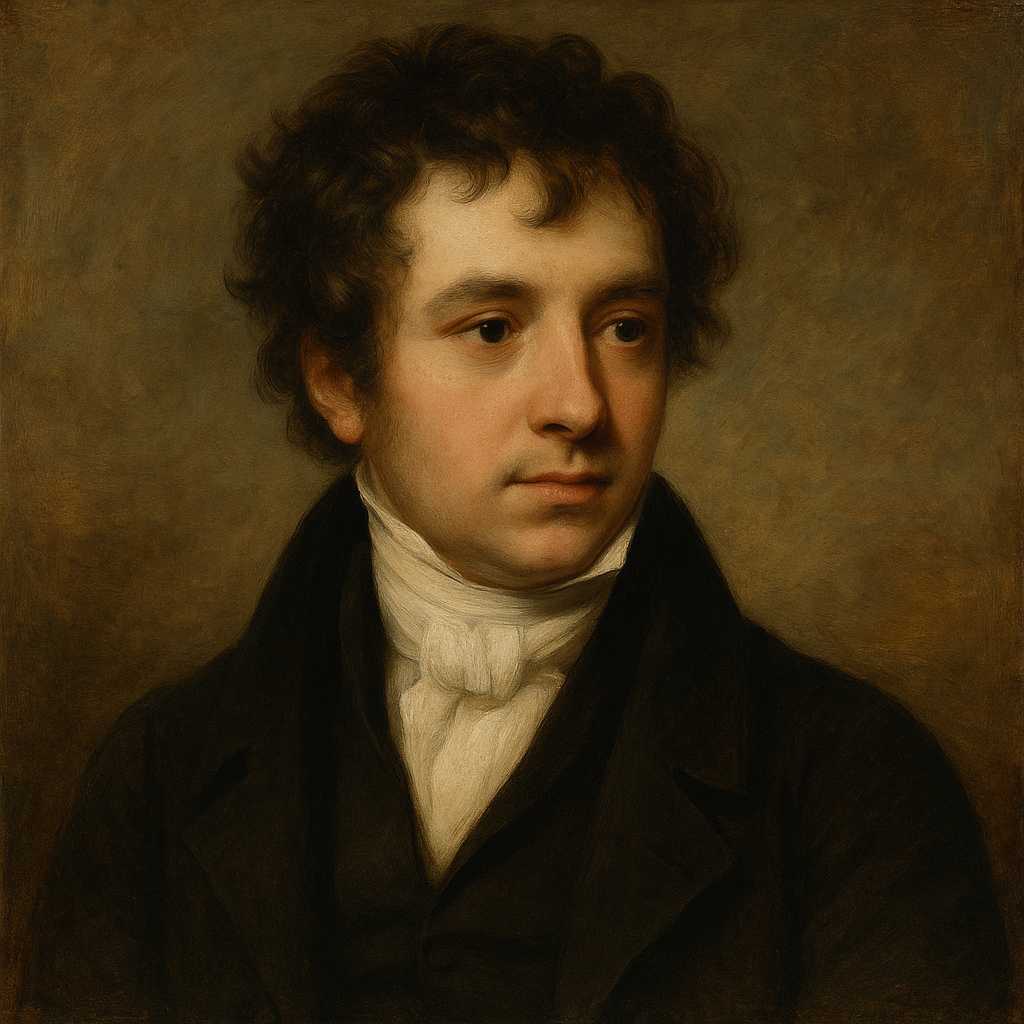To a Deaf and Dumb Little Girl
Hartley Coleridge
1796 to 1849

Like a loose island on the wide expanse,
Unconscious floating on the fickle sea,
Herself her all, she lives in privacy;
Her waking life as lonely as a trance,
Doom’d to behold the universal dance,
And never hear the music which expounds
The solemn step, coy slide, the merry bounds.
The vague, mute language of the countenance.
In vain for her I smooth my antic rhyme;
She cannot hear it. All her little being
Concentrated in her solitary seeing—
What can she know of beauty or sublime?
And yet methinks she looks so calm and good,
God must be with her in her solitude!
Hartley Coleridge's To a Deaf and Dumb Little Girl
Introduction
Hartley Coleridge's sonnet "To a Deaf and Dumb Little Girl" presents a poignant meditation on the nature of sensory deprivation and its impact on human experience. The poem, written in the early 19th century, reflects the Romantic preoccupation with the individual's relationship to the world and the divine. Through its masterful use of imagery, metaphor, and form, Coleridge creates a complex portrait of a child isolated by her disabilities, yet potentially blessed with a unique connection to the sublime. This analysis will explore the poem's structure, language, and themes, situating it within the broader context of Romantic poetry and philosophy.
Form and Structure
Coleridge employs the Petrarchan sonnet form, consisting of an octave (the first eight lines) and a sestet (the final six lines). This structure allows for a natural division between the description of the girl's condition and the poet's reflections on her experience. The rhyme scheme (ABBAABBACDCDEE) adheres closely to the traditional Italian sonnet, with a volta or turn occurring between the octave and sestet.
The use of iambic pentameter throughout the poem creates a rhythmic regularity that contrasts with the girl's perceived disconnection from the world's "universal dance." This tension between form and content underscores the poem's central themes of isolation and harmony.
Imagery and Metaphor
The opening lines of the poem introduce a powerful extended metaphor:
"Like a loose island on the wide expanse, Unconscious floating on the fickle sea, Herself her all, she lives in privacy;"
This image of the girl as an island adrift in a vast ocean serves multiple purposes. It emphasizes her isolation, suggesting that she is cut off from the mainland of human experience. The adjective "loose" implies a lack of connection or rootedness, while "unconscious floating" suggests both a lack of agency and a certain peacefulness in her condition.
The sea, described as "fickle," represents the ever-changing world of sensory experience from which the girl is largely excluded. This metaphor is particularly apt, as it captures both the girl's separation from others and the fluid, unstable nature of the world she cannot fully perceive.
Sensory Deprivation and Perception
Coleridge's portrayal of the girl's sensory experience is nuanced and empathetic. He describes her as:
"Doom'd to behold the universal dance, And never hear the music which expounds The solemn step, coy slide, the merry bounds."
The use of "doom'd" implies a tragic fate, yet the following lines suggest a rich visual world that the girl can access. The "universal dance" becomes a metaphor for life itself, with its various movements and rhythms. However, the absence of sound creates a disconnect between what she sees and a fuller understanding of the world around her.
The phrase "vague, mute language of the countenance" further emphasizes this disconnect. It suggests that while the girl can observe facial expressions, she lacks access to the auditory cues that would give them full meaning. This idea is reinforced by the poet's lament that his "antic rhyme" is lost on her, highlighting the limitations of verbal communication in reaching her.
Concentration and Interiority
The sestet shifts focus to the girl's inner experience:
"In vain for her I smooth my antic rhyme; She cannot hear it. All her little being Concentrated in her solitary seeing—"
Here, Coleridge suggests that the girl's visual sense has become heightened or more focused due to her lack of hearing. The use of "concentrated" implies an intensity of perception that might not be present in those with full sensory capabilities. This idea aligns with the Romantic notion of compensation, where the loss of one faculty might lead to the enhancement of others.
The Sublime and Divine Presence
The poem's final lines introduce a philosophical and spiritual dimension:
"What can she know of beauty or sublime? And yet methinks she looks so calm and good, God must be with her in her solitude!"
Coleridge first questions the girl's ability to apprehend beauty or the sublime, concepts central to Romantic aesthetics. The sublime, in particular, was often associated with overwhelming sensory experiences that inspired awe or terror. The poet's initial skepticism about her access to these experiences is quickly countered by his observation of her demeanor.
The final couplet suggests that the girl's calmness and apparent goodness are signs of divine presence. This interpretation aligns with the Romantic idea of children as being closer to nature and the divine, uncorrupted by society. The exclamation point at the end lends a sense of epiphany to this realization, as if the poet has suddenly glimpsed a deeper truth about the girl's condition.
Romantic Themes and Context
"To a Deaf and Dumb Little Girl" engages with several key Romantic themes. The focus on an individual's unique perception of the world reflects the Romantic emphasis on subjectivity and personal experience. The poem's exploration of sensory deprivation can be seen as part of the broader Romantic interest in altered states of consciousness and their potential for spiritual insight.
The tension between isolation and connection in the poem also speaks to the Romantic preoccupation with the individual's relationship to society and nature. While the girl is portrayed as separate from the "universal dance," she is also presented as potentially having a special connection to the divine.
Coleridge's empathetic portrayal of disability is notable for its time, showing a nuanced understanding of the girl's experience rather than simple pity or fear. This approach aligns with the Romantic valorization of marginalized figures and experiences as sources of authentic insight.
Language and Sound
The poem's attention to sound and its absence is reflected in its own musicality. The alliteration in phrases like "solemn step" and "coy slide" creates a sonic richness that ironically underscores what the girl cannot hear. The repeated 's' sounds in the octave ("sea," "herself," "solitary," "seeing") create a sibilant effect that might evoke the sound of waves, reinforcing the island metaphor.
The use of words related to sound and music ("hear," "music," "rhyme") throughout the poem serves to highlight their absence in the girl's experience. This technique creates a kind of phantom presence of sound, making the reader more aware of its importance by its very absence for the poem's subject.
Conclusion
Hartley Coleridge's "To a Deaf and Dumb Little Girl" is a masterful exploration of sensory experience, isolation, and the possibility of divine connection. Through its careful structure, vivid imagery, and philosophical depth, the poem invites readers to consider the nature of perception and the diverse ways in which individuals might experience the world and connect with the sublime.
The poem's empathetic portrayal of disability, its engagement with Romantic themes of individuality and spirituality, and its skillful use of poetic techniques all contribute to its enduring power. By presenting the girl's condition as both a source of isolation and potentially a unique form of grace, Coleridge challenges readers to reconsider their assumptions about normalcy, communication, and the nature of human experience.
In the broader context of Romantic poetry, "To a Deaf and Dumb Little Girl" stands as a sensitive and thought-provoking contribution to discussions of perception, spirituality, and the human condition. Its nuanced treatment of its subject and its philosophical implications continue to resonate with readers, offering insights into both the particularities of sensory deprivation and the universal questions of human existence and divine presence.
This text was generated by AI and is for reference only. Learn more
Want to join the discussion? Reopen or create a unique username to comment. No personal details required!



Comments
No comments yet. Be the first to comment!